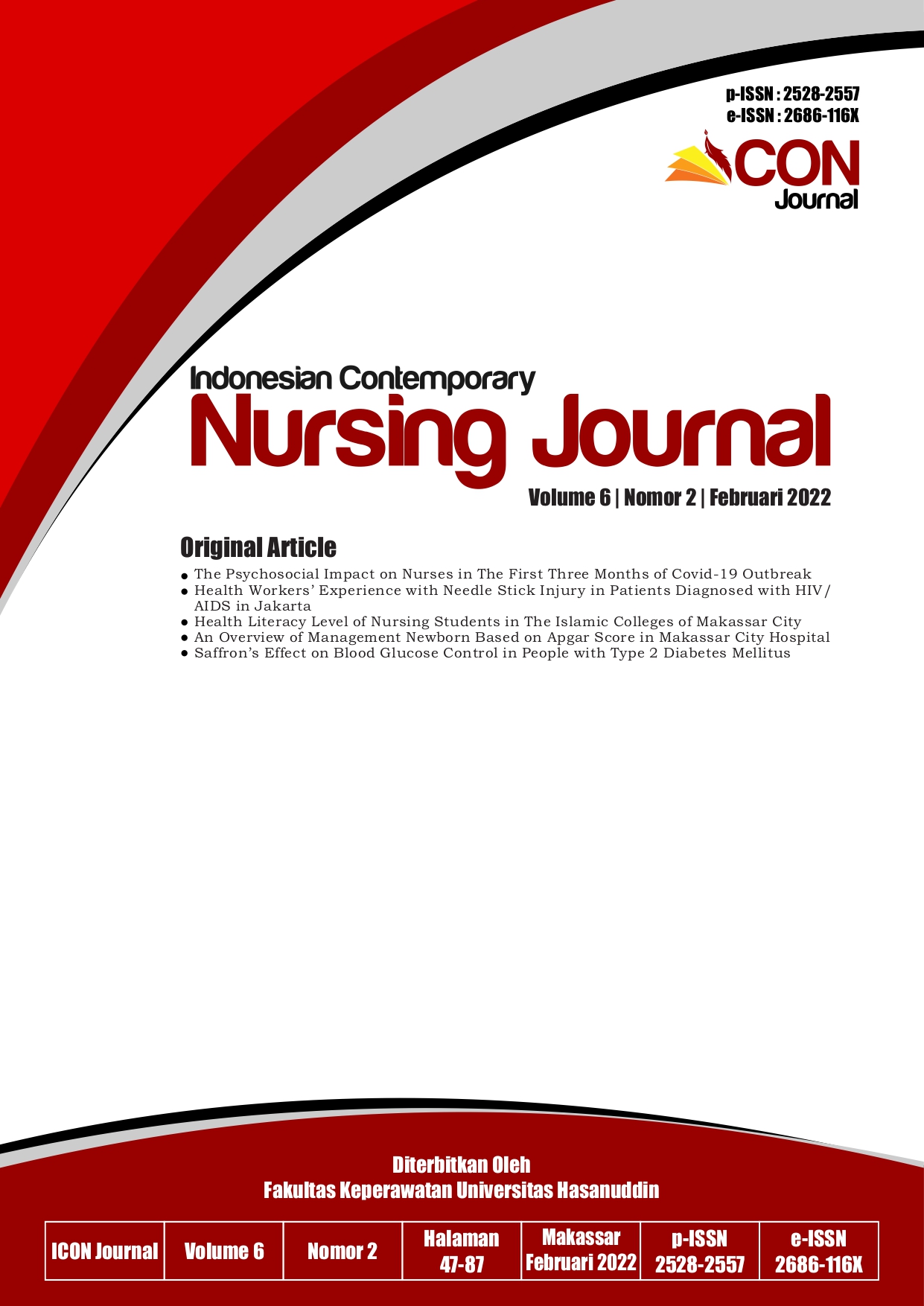Saffron’s Effect on Blood Glucose Control in People with Type 2 Diabetes Mellitus
Keywords:
Saffron, Type 2 Diabetes Mellitus, Blood GlucoseAbstract
Introduction: Diabetes mellitus is a chronic disease that increase blood glucose owing to the body’s inability to make or use insulin properly. Chronic hyperglycemia is a significant issue for those with diabetes mellitus since it can result in a variety of problems. Controlling blood sugar is one of the therapies to prevent, inhibit and decrease diabetes-related problems. Consuming Saffron is a non-pharmacological way to enhance blood glucose management. Saffron include Crocins, Picrocrocin, and Safranal, all of which have hypoglycemic properties, improve insulin sensitivity, and help manage blood glucose. The purpose of this study is to assess the effect of Saffron (Crocus Sativus) on person with type 2 diabetes mellitus in terms of blood glucose control. Method: The research employed a quasi experimental approach, comprising a Pre-and post-test with control. Purposive sampling was used to split 54 respondents into two groups; 27 intervention groups and 27 control groups. The research was conducted in RW 09 Kelurahan Kebayoran Lama Utara in Jakarta Selatan. The paired T Test is applied for statistical analysis. Result: The results of this study indicated that Saffron had a substantial effect on blood glucose levels in patients with type 2 diabetes mellitus in the intervention group with a P-value 0,005 (P value < 0,05). Conclusion: Saffron can be used as a non-pharmacological treatment to help control blood glucose levels and avoid diabetic complications.Downloads
Download data is not yet available.
Dimensions
Published
2022-06-28
How to Cite
Oktavianti, D. S. ., Said, I., Reni Oktavia, A., & Tanuwijaya, R. R. (2022). Saffron’s Effect on Blood Glucose Control in People with Type 2 Diabetes Mellitus. Indonesian Contemporary Nursing Journal (ICON Journal), 6(2), 80-87. https://doi.org/10.20956/icon.v6i2.18787
Issue
Section
ARTICLES
Copyright & Licensing
Authors who publish with this journal agree to the following terms:
Authors retain copyright and grant the journal right of first publication with the work simultaneously licensed under a Creative Commons Attribution License that allows others to share the work with an acknowledgement of the work's authorship and initial publication in this journal.
Authors are able to enter into separate, additional contractual arrangements for the non-exclusive distribution of the journal's published version of the work (e.g., post it to an institutional repository or publish it in a book), with an acknowledgement of its initial publication in this journal.
Authors are permitted and encouraged to post their work online (e.g., in institutional repositories or on their website) prior to and during the submission process, as it can lead to productive exchanges, as well as earlier and greater citation of published work (See The Effect of Open Access).
Authors retain copyright and grant the journal right of first publication with the work simultaneously licensed under a Creative Commons Attribution License that allows others to share the work with an acknowledgement of the work's authorship and initial publication in this journal.
Authors are able to enter into separate, additional contractual arrangements for the non-exclusive distribution of the journal's published version of the work (e.g., post it to an institutional repository or publish it in a book), with an acknowledgement of its initial publication in this journal.
Authors are permitted and encouraged to post their work online (e.g., in institutional repositories or on their website) prior to and during the submission process, as it can lead to productive exchanges, as well as earlier and greater citation of published work (See The Effect of Open Access).
Most read articles by the same author(s)
- Yori Yolanda, Irfan Said, Tati Suryati, Ria Simanungkalit, The Effects of Progressive Muscle Relaxation on the Level of Anxiety in Nurses Caring for Patients with Covid-19 , Indonesian Contemporary Nursing Journal (ICON Journal): Vol. 7 No. 1 (2022): Volume 7 No. 1 Agustus 2022

